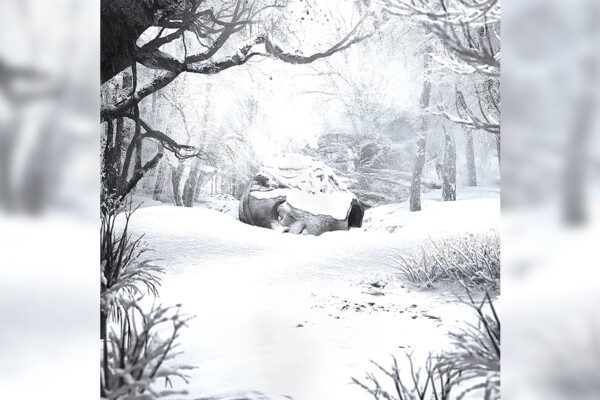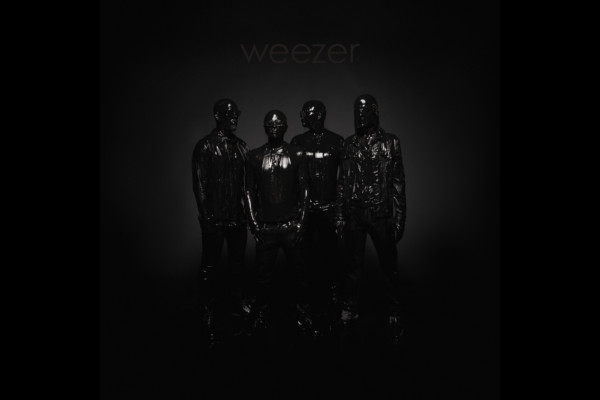Back to the Shack: An Interview with Scott Shriner

Weezer fans have rejoiced at the band’s latest release Everything Will Be Alright In The End for many reasons. It’s the group’s first release since 2010’s Hurley, which ended a prolific period of releasing an album every year. It’s also a return to the early sound that earned them a diehard following. Lead singer Rivers Cuomo spells out the return to their roots in the album’s first single, “Back to the Shack,” and the band even reunited with producer Ric Ocasek for the project. One key ingredient that keeps the album in the present is the solid groundwork laid by bassist Scott Shriner.
Shriner, who joined the band in 2001, has always stood out among the group’s history of bassists, and it’s not just because of his tattoos. His more aggressive style brings an extra edge to Weezer’s tone without becoming overbearing. The self-proclaimed gearhead isn’t afraid to experiment to get his own signature tone while he accents his rock-solid pocket playing with tasteful fills, as evidenced in “Back to the Shack.”
The band has been touring in support of the album since its release. Shriner cut his right pinkie and severed two tendons in a kitchen accident while on the road, but instead of taking time off, he taped it up and kept on rocking. The current leg of the tour wraps up in Santa Ana, California on December 17th.
We reached Shriner before his gig in Austin, Texas to get the scoop on the new album, his sound, how his injury affected his playing, and what he’s listening to.
How is your hand healing up?
I got about sixty percent of my movement back and it’s holding up good. I got into the gym for the first time again yesterday. The hand doctor says I should make a full recovery.
I guess if you had to get a finger injury, that would be the best one for a bass player.
You know, it did something kind of cool. I could not hold a pick with my splint on so I had to go back to playing with my fingers, which is how I grew up playing in the first place. There were four or five people from the crew compliment me saying, “That’s the best you’ve sounded in years!” I was just like, “Shut the [expletive] up.” [laughs] I can see why, because the fingers make a big, round sound that blends well with the kick. Although I love playing with a pick and getting into the guitar range, we already have two guitar players. It makes the band sound a little fuller when I keep it on fingers.
But you’re a pick and fingers guy, not just one or the other, right?
No, I go back and forth all the time. In a perfect world, I do probably sixty percent fingers and maybe forty percent pick. Like on “Hash Pipe,” I want to palm mute and that’s the sound of that song. Some stuff is a little more punky, but man, fingers sound pretty fat.

The band’s sound is coming back full circle a bit on Everything Will Be Alright in The End, so how is this album different for you compared to the others you’ve played on with Weezer?
I think that the main difference is that I was kind of let loose. It wasn’t like, “Hey, play whatever the hell you want,” because obviously [producer] Ric Ocasek’s not going to mess around with something that’s going to screw up the song. But he really liked how I played and like some of the chances that I took and the aggressiveness. Even if some of the notes weren’t perfect, he was into capturing the vibe that I was putting out there. They’re such great songs and I was able to find a sound that I think is the best sound I’ve ever had on an album. It wasn’t like someone said, “OK, we want you to sound like we did in this time.” It was more like bring your best stuff and we’re going to make it sound like Weezer.
You play some great fills in “Back to the Shack” that are super grindy. What were you using for that?
Yeah, it’s crazy. It was two things. It was a 50-watt vintage Orange head through an Emperor guitar cab. For that fill we used a Dwarfcraft pedal. They make some weird stuff, but they also make some not weird stuff, like the Baby Thundaa pedal. It just has a certain kind of grind to it that cuts through in a great way.
How do you strike the balance of keeping things tasteful and deciding when to add a fill?
One of the main things is restraint. [In “Back to the Shack”], I wait until Rivers says “I had to make a few mistakes to find out who I am.” So it’s kind of an answer to him. Traditionally, you’d think you shouldn’t play a bass fill here [because] it’s the second verse. You haven’t even gotten to the bridge. I think Paul McCartney said that bass players should have one moment in each song to do a little thing. I try to remember that. Finding the holes and a place where it’s not going to take away from what Rivers is saying I think just kind of adds something. To me, it was kind of like, “Well it would be a mistake to play a fill here, but that’s why I’m going to play a fill in the second verse.” [laughs]
I started embellishing it live and taking it a couple steps further. It’s been really helpful to play these songs live while we were recording them. It was like, “Man, you’ve got to do that exact fill in the song. We have to record that.” So we had already finished recording “Back to the Shack” and were playing it. I started changing it, so then I had to go back and record it to what we were doing live.
How much are the songs morphing on the road? Is there a lot of tweaking as you go?
That would be cool, but Weezer is not so much an improv band. We have a few interludes that we mess around with, but that’s it. We’re really happy with the finished product and we’re really trying to stick to what we recorded. It’s not that I’m now embellishing too much. I’m trying to stick to what I did on the album and make the best representation of the album in a live form. There’s not a lot of changing it at this point.
I don’t think we’ve ever recorded a record and did the whole album. It’s been a bit of work to get things up to live standards. It’s been keeping me busy.

How have the crowds been reacting to the new stuff?
As “Back to the Shack” was doing good on the radio, it was great to see all different kinds of people enjoying that song. I always love it when we add a new song to the set and see a great reaction from it. We’ve been doing these Everything Will Be Alright In The End shows where we play the whole album. People are in tears and having so much joy and so much fun doing these songs live. It’s amazing.
What was the most difficult part of making this album for you?
I really don’t have a good answer for that. Ric Ocasek was a pleasure to be around. The band was all really excited and I think this was teh first time in a long time where there were songs that every single band member said, “Oh, this is my favorite song!” It was all so positive and we enjoyed ourselves so much.
There’s a certain amount of work in the studio that might not be pleasant all the time, like trying to figure out different parts and make something from the demo work. But my memory of it was that it was a blast. There was never a night that I came home holding my face in my hands, like “Oh [expletive]. This isn’t working.” It was really fun. I just felt like having Ric around was great. He was excited and we were all excited. The worst part of the album was the traffic on the way to the studio.
Do you have a favorite track from the album?
I really like the last three songs, “The Futurescope Trilogy.” I get to play a little bit of guitar in it. I had a double neck made for me by Kevin Burkett over at Electrical Guitar Company. There’s a couple parts where I play guitar then I have to switch over and play bass. Those songs are so satisfied.
On “The Waste Land” song, I start on guitar with an octave pedal through my bass cabinet. Then I switch over to this insanely distorted bass sound. Actually, the bass on that song we kept from the tracking bass. We were just trying to get drum takes but I got the performance I wanted while we were doing drums. Sonically it might be a little bit mushier than other takes that I did in the control room, but man the spirit of that was everything that I like about bass.
You’re a bit of a gearhead aren’t you? Could you give us a rundown of your rig?
Yeah, I’m a gearhead and kind of a gear hoarder. We actually have two different rigs. They’re not identical and I like them both for different reasons.
Our A rig is a Verellen Meatsmoke head through a Roller Sound 8×10 cab. I got an amp switcher made by Ned Clayton over at Hex Cabs. My amp switcher then runs a Sunn Model T head through an Emperor guitar 4×12 cabinet. The Sunn is set to stun, and I basically toggle that cab on for distortion and blend it in. The 8×10 is driven pretty hard, but it’s more for my clean sound. Then I have pedals – I enjoy the Wren & Cuff Tri Pie fuzz and that Dwarfcraft Baby Thundaa – and that puts it completely over the top. So that’s one rig.
The B rig is a Hex 300 head into a ported Emperor 8×10. Then there’s a Hex model X head, which is their Model T clone, and that goes through a Hex Cabs 2×15 and 2×12 cabinet. I’m really fortunate to have some great choices. The Hex stuff is amazing and Gentry Densley makes that stuff in Salt Lake City. He goes to great lengths to make great gear. And of course Ben Verellen of Helms Alee makes those Meatsmoke heads and those things are just insane. I don’t think the Emperor guys are currently making things but I have a couple of Emperor backlines that are unbelievable.
I have a little too much stuff and some of it probably needs to go away, but I’m holding onto it for now.
What was the last album you bought?
I just bought the Gary Clark live double LP. I really dig him. And before that I bought the massive King Crimson live Starless and Bible Black tour 10 or however many CD set from 1973 or 1974. I hate to be living in the past but I’m on a King Crimson thing right now. I think John Wetton is a really underrated human being in general. His voice and his bass playing is just unbelievable. And his tone. I just love that guy.
John Wetton is a good example of where I’m at right now. He plays with his fingers, he has a cool envelope wah and a fuzz, but most of the time either he plays a little harder or he plays softer and uses the natural compression and dynamics of the amp rather than relying on just pedals. He’s a beautiful player though, that guy.



